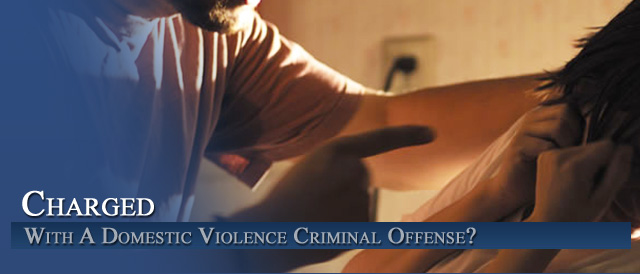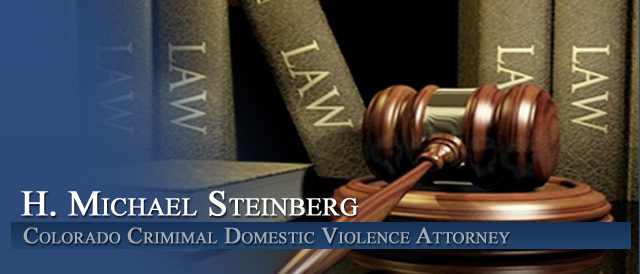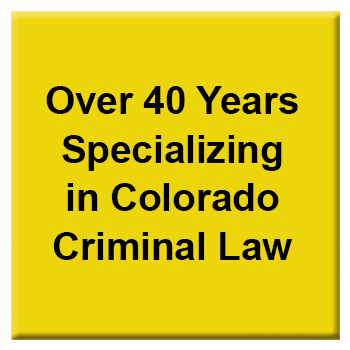




Lifting Or Modifying Colorado Civil Restraining – Protection Orders Pursuant to C.R.S. 13-14-108
By H. Michael Steinberg Colorado Domestic Violence Criminal Defense Lawyer

__________________
Lifting Or Modifying Colorado Civil Restraining – Protection Orders Pursuant to C.R. S. 13-14-108
Lifting Or Modifying Colorado Civil Restraining – Protection Orders Pursuant to C.R. S. 13-14-108 – In 2013 the Colorado State Legislature made massive and important changes to the Colorado Civil Restraining – Protection Order system.
Before proceeding further – here is a Link to follow for all Colorado Civil Protection forms and instructions: ..and here is a specific link to the exact form to modify or terminate a Colorado Permanent Restraining Order.
The Two Ways Restraining Orders Are Now Obtained
There are TWO PRIMARY TYPES OF RESTRAINING ORDERS in the State of Colorado – Criminal Case originating and Civil Case originating Restraining – Protection Orders:
TYPE I: MANDATORY CRIMINAL RESTRAINING ORDERS under Colorado criminal code – Title 18.
TYPE II: CONSOLIDATED CIVIL RESTRAINING ORDER under the civil process of CRS §§ 13-14-100.2 and the other statutes in the series.
Here is a LINK to ALL Colorado Civil Restraining Orders 13-14-105 of the new laws under the consolidated statutory scheme. I address all of the new laws in another article that is being crafted now.
The New (2013) Colorado Civil Restraining Order Process – 13-14-100.2
The new laws for obtaining a civil restraining order:
- Eliminated all other civil mechanisms for obtaining a protective order in Colorado – CRS § 13-14-100.2(1).
- Adds sexual assault or abuse as a specific basis for requesting a protective order
- Defines contact to now include new forms of electronic communication.
- Adds an entire section which addresses prohibitions on the possession or purchase of firearms for some individuals subject to a civil protection order.
- Clarifies the long-held practice that the standard of proof for obtaining a permanent civil protection order is by a preponderance of the evidence.
- Modifies and increases the maximum agreed-upon extension of a temporary protection order from 120 days to one year.
- Extends the maximum time under which a Title 13 restraining order can award temporary custody and control of a minor child from 120 days to one year.
- Reduces he time before which a restrained party may request a modification or dismissal of the restraining order from four years to two years for permanent restraining orders issued after July 1. 2013.
This Article addresses only a small part of the new reorganization of the Colorado Civil Restraining Order Process – that is LIFTING the Colorado Permanent Restraining Order
The Modification Or Termination Of The Colorado Civil Restraining Orders Under § 13-14-108.
The modification and termination of civil protection orders can be found under:
Title 13 – COURTS AND COURT PROCEDURE CIVIL PROTECTION ORDERS
Article 14. Civil Protection Orders
Here is a complete reprint of the law with commentary from HMS:
§ 13-14-108. Modification and termination of civil protection orders
[HMS – Section (1) cedes the jurisdiction of an order granted under section 105 (below) if the subject matter of the restraining order is covered by a Colorado Dissolution Of Marriage case.]
(1) Any order granted pursuant to section 13-14-105(1) (c) or (1) (e) must terminate whenever a subsequent order regarding the same subject matter is granted pursuant to the “Uniform Dissolution of Marriage Act”, article 10 of title 14, C.R.S., the “Uniform Child-custody Jurisdiction and Enforcement Act”, article 13 of title 14, C.R.S., or the “Colorado Children’s Code”, title 19, C.R.S.
[HMS – Section (2) (a) – allows the “protected party” of the restraining order – (the person seeking and having obtained the order of protection) to apply to the court at ANY TIME to either modify or terminate the civil protection order]
(2) (a) Nothing in this article precludes the protected party from applying to the court at any time for modification, including but not limited to a modification of the duration of a protection order or dismissal of a temporary or permanent protection order issued pursuant to this section.
[HMS – Section (2)(b) allows the “restrained party” to seek a modification or termination of a permanent restraining order AFTER AT LEAST TWO YEARS has passed.]
(b) The restrained party may apply to the court for modification, including but not limited to a modification of the duration of the protection order or dismissal of a permanent protection order pursuant to this section. However, if a permanent protection order has been issued or if a motion for modification or dismissal of a permanent protection order has been filed by the restrained party, whether or not it was granted, no motion to modify or dismiss may be filed by the restrained party within two years after issuance of the permanent order or after disposition of the prior motion.
[HMS – Section (3)(a)(I) prohibits a modification or termination of a Colorado Civil Restraining Order IF the “restrained party” is convicted of ANY misdemeanor or felony against the protected person..]
(3) (a) (I) Notwithstanding any provision of subsection (2) of this section to the contrary, after issuance of the permanent protection order, if the restrained party has been convicted of or pled guilty to any misdemeanor or any felony against the protected person, other than the original offense, if any, that formed the basis for the issuance of the protection order, then the protection order remains permanent and must not be modified or dismissed by the court.
[HMS – Section (3)(a)(II) provides that the restriction of the above section does not apply if the request to modify or terminate the restraining order is made by the protected person or the protected person’s parent, legal guardian or conservator.. with a minor exception.]
(II) Notwithstanding the prohibition in subparagraph (I) of this paragraph (a), a protection order may be modified or dismissed on the motion of the protected person, or the person’s attorney, parent or legal guardian if a minor, or conservator or legal guardian if one has been appointed; except that this paragraph (a) does not apply if the parent, legal guardian, or conservator is the restrained person.
[HMS – Section (3)(b) – This new provision requires that the restrained party must run a recent (within 90 days of the filing of the motion)and certified fingerprint based criminal history that must be attached to the motion and which proves the absence of any crimes where the protected party is the victim.]
(b) A court shall not consider a motion to modify a protection order filed by a restrained party pursuant to paragraph (a) of this subsection (3) unless the court receives the results of a fingerprint-based criminal history record check of the restrained party that is conducted within ninety days prior to the filing of the motion.
The fingerprint-based criminal history record check must include a review of the state and federal criminal history records maintained by the Colorado bureau of investigation and federal bureau of investigation. The restrained party shall be responsible for supplying fingerprints to the Colorado bureau of investigation and to the federal bureau of investigation and paying the costs of the record checks.
The restrained party may be required by the court to provide certified copies of any criminal dispositions that are not reflected in the state or federal records and any other dispositions that are unknown.
[HMS – Section (4) this provision makes certain the court retains jurisdiction over the permanent protection order as long as the order remains in force.]
(4) Except as otherwise provided in this article, the issuing court retains jurisdiction to enforce, modify, or dismiss a temporary or permanent protection order.
[HMS – Section (5) – Requires that the party seeking a modification or dismissal of the permanent protection order serve the other side personally – that is usually accomplished through the use of the county sheriff or a private process serving company.]
(5) The court shall hear any motion filed pursuant to subsection (2) of this section. The party moving for a modification or dismissal of a temporary or permanent protection order pursuant to subsection (2) of this section shall affect personal service on the other party with a copy of the motion and notice of the hearing on the motion, as provided by rule 4 (e) of the Colorado rules of civil procedure.
[HMS – This section also establishes the burden of proof on the party seeking the change to the restraining order. This section also permits the protected party to maintain the confidentiality of their address.]
The moving party shall bear the burden of proof to show, by a preponderance of the evidence, that the modification is appropriate or that a dismissal is appropriate because the protection order is no longer necessary. If the protected party has requested that his or her address be kept confidential, the court shall not disclose such information to the restrained party or any other person, except as otherwise authorized by law.
[HMS – Section (6) is THE MOST CRITICAL SECTION of this statute. This Section 6 establishes the specific factors that the trial court is required to weigh before granting or denying a modification or a termination of the civil restraining order. ]
(6) In considering whether to modify or dismiss a protection order issued pursuant to this section, the court shall consider all relevant factors, including but not limited to:
(a) Whether the restrained party has complied with the terms of the protection order;
(b) Whether the restrained party has met the conditions associated with the protection order, if any;
(c) Whether the restrained party has been ordered to participate in and has completed a domestic violence offender treatment program provided by an entity approved pursuant to section 16-11.8-103, C.R.S., or has been ordered to participate in and has either successfully completed a sex offender treatment program provided by an entity approved pursuant to section 16-11.7-103, C.R.S., or has made significant progress in a sex offender treatment program as reported by the sex offender treatment provider;
(d) Whether the restrained party has voluntarily participated in any domestic violence offender treatment program provided by an entity approved pursuant to section 16- 11.8-103, C.R.S., or any sex offender treatment program provided by an entity approved pursuant to section 16-11.7-103, C.R.S.;
(e) The time that has lapsed since the protection order was issued;
(f) When the last incident of abuse or threat of harm occurred or other relevant information concerning the safety and protection of the protected person;
(g) Whether, since the issuance of the protection order, the restrained person has been convicted of or pled guilty to any misdemeanor or any felony against the protected person, other than the original offense, if any, that formed the basis for the issuance of the protection order;
(h) Whether any other restraining orders, protective orders, or protection orders have been subsequently issued against the restrained person pursuant to this section or any other law of this state or any other state;
(i) The circumstances of the parties, including the relative proximity of the parties’ residences and schools or work places and whether the parties have minor children together; and
(j) Whether the continued safety of the protected person depends upon the protection order remaining in place because the order has been successful in preventing further harm to the protected person.
[HMS – This last section is ridiculous. On it’s face the absence of further incidents – which may be the hard work of the restrained part – may be construed by the Court as evidence of the success of the permanent restraining order and not changes made on the part of restrained party.]Lifting Or Modifying Colorado Civil Restraining – Protection Orders Pursuant to C.R.S. 13-14-108
If you found any of the information I have provided on this web page article helpful please click my Plus+1 or the Share buttons below so that others may also find it.
Never stop fighting – never stop believing in yourself and your right to due process of law.
ABOUT THE AUTHOR: H. Michael Steinberg – Email The Author at [email protected] – A Denver Colorado Criminal Defense Lawyer – or call his office at 303-627-7777 during business hours – or call his cell if you cannot wait and need his immediate assistance – 720-220-2277. Attorney H. Michael Steinberg is passionate about criminal defense. His extensive knowledge and experience of Colorado Criminal Law gives him the edge you need to properly handle your case.
 You should be careful to make a responsible choice in selecting a Colorado Criminal Defense Lawyer – and we encourage you to “vet” our firm. Over the last 40 plus years – by focusing ONLY on Colorado criminal law – H. Michael has had the necessary time to commit to the task of constantly updating himself on nearly every area of criminal law, to include Colorado criminal law and procedure and trial and courtroom practice. H. Michael works hard to get his clients the best possible results in and out of the courtroom. He has written, and continues to write, extensively on Colorado criminal law and he hopes this article helps you in some small way – Lifting Or Modifying Colorado Civil Restraining – Protection Orders Pursuant to C.R.S. 13-14-108.
You should be careful to make a responsible choice in selecting a Colorado Criminal Defense Lawyer – and we encourage you to “vet” our firm. Over the last 40 plus years – by focusing ONLY on Colorado criminal law – H. Michael has had the necessary time to commit to the task of constantly updating himself on nearly every area of criminal law, to include Colorado criminal law and procedure and trial and courtroom practice. H. Michael works hard to get his clients the best possible results in and out of the courtroom. He has written, and continues to write, extensively on Colorado criminal law and he hopes this article helps you in some small way – Lifting Or Modifying Colorado Civil Restraining – Protection Orders Pursuant to C.R.S. 13-14-108.

Other Articles of Interest:
- Colorado Domestic Violence Permanent Civil Protection Order Laws – Title 13 and 18
- Colorado Civil Protection Orders And The Loss Of The Right To Bear Firearms – 13-14-105.5
- Questions and Answers About Violation of A Restraining Order in Colorado
- How To Lift A Colorado Domestic Violence No Contact Order by Denver Criminal Defense Lawyer – H. Michael Steinberg
- Colorado Domestic Violence Restraining Orders – The Trick -Making Me Break the Restraining Order












